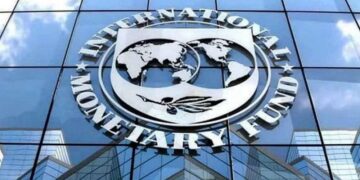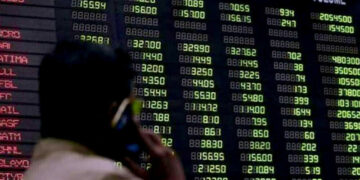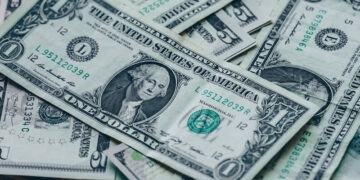 WASHINGTON – Jobs are scarce and food prices are likely to stay high through next year, according to new data that reinforced evidence of a U.S. economy stuck in a weak patch. There was some good news in the spate of reports released Thursday. The U.S. trade deficit narrowed in April after American companies sold more goods overseas and imports fell. The second straight month of record exports helped Wall Street end its six-day losing streak. The Dow Jones industrial average gained 75 points to close up for the day. Broader indexes also increased.
WASHINGTON – Jobs are scarce and food prices are likely to stay high through next year, according to new data that reinforced evidence of a U.S. economy stuck in a weak patch. There was some good news in the spate of reports released Thursday. The U.S. trade deficit narrowed in April after American companies sold more goods overseas and imports fell. The second straight month of record exports helped Wall Street end its six-day losing streak. The Dow Jones industrial average gained 75 points to close up for the day. Broader indexes also increased.
But most economists downplayed the impact of the smaller trade gap. They said it was mostly because of temporary factors and focused on other reports that suggest hiring could weaken and growth could slow. “There is a significant slowdown going on,” said Paul Dales, senior U.S. economist at Capital Economics. “The economy is unlikely to grow at a decent rate anytime in the next year or two.”
Thursday’s data showed:
• The number of people seeking unemployment benefits hardly changed for a second straight week, the Labor Department said. Applications ticked up 1,000 to a seasonally adjusted 427,000 last week. It marked the ninth straight week in which applications have been above 400,000. That trend represents a setback after applications had been declining all winter.
• A wet spring will likely cut the size of this fall’s corn harvest and keep food prices high through 2012, the Agriculture Department said. That would limit consumers’ ability to spend money on other goods. Consumer spending accounts for 70 percent of the U.S. economy.
• Exports of U.S. goods and services rose to a record $175.6 billion while imports dipped to $219.2 billion, the Commerce Department reported. But a key reason the U.S. trade deficit narrowed was a 25.5 percent decline in imports from Japan, which is recovering from the March 11 earthquake and tsunami. Most economists expect Japanese factories will rebound in the next few months. That should ease supply disruptions and boost imports.
• Wholesale companies added to their stockpiles in April for a 16th straight month, a separate Commerce report said. That boosted inventories to the highest level since October 2008, a sign that businesses in early spring were expecting stronger sales. But more recent data suggests that high gas prices have since weakened demand for manufactured goods, a trend that could shrink supply levels in the months to come.
Hiring has slowed at the same time that unemployment benefits have remained at elevated levels. Employers added only 54,000 net new jobs in May, the department said last week. That was much slower than the average gain of 220,000 per month in the previous three months. The unemployment rate rose to 9.1 percent.
Unemployment applications had fallen in February to 375,000, a level that signals sustainable job growth. They stayed below 400,000 for seven of nine weeks. But applications surged in April to 478,000 — an eight-month high — and they have been stuck above 400,000 since then.
Neil Dutta, an economist at Bank of America Merrill Lynch, said hiring will likely rebound to a pace of about 150,000 new jobs per month. But that’s barely enough to reduce the unemployment rate.
Recent data suggests that employers have lost some confidence in the economic recovery, Dutta said. He pointed to gas prices, the Japan crises that have led to a parts shortage and the inability of Congress to agree on a plan to raise the $14.3 trillion debt ceiling as the main reasons.
Food prices are also straining household budgets. The latest forecast for the U.S. corn crop suggests that will continue through next year. The United States will have a surplus of just 695 million bushels of corn in 2012, far less than the 900 million estimated last month.
Rain delayed planting schedules and will likely diminish crops by harvest time in September, the government said. More expensive grain could ultimately make everything from beef to cereal to soft drinks more expensive at the supermarket. For all of 2011, the USDA predicts food prices will rise 3 percent to 4 percent.
There were some positive signs in the latest reports.
American companies sold more computers, heavy machinery and telecommunications equipment in foreign markets in April. That pushed exports to a record high for the second straight month and narrowed the trade deficit for the first time since December. A weaker dollar has made U.S. goods and services cheaper overseas.
And sales by wholesale companies increased in April for the ninth time in 10 months. – Yahoonews












